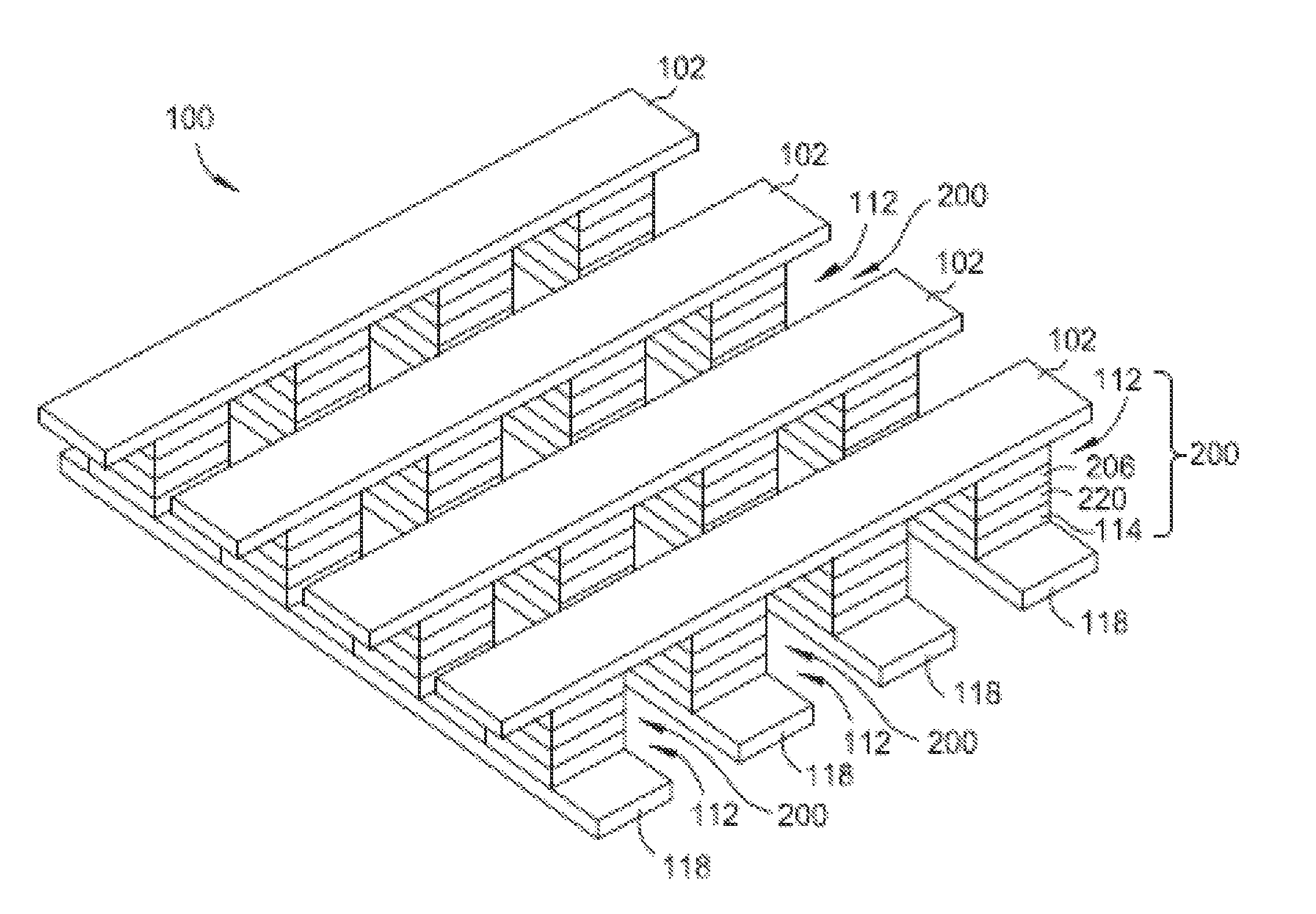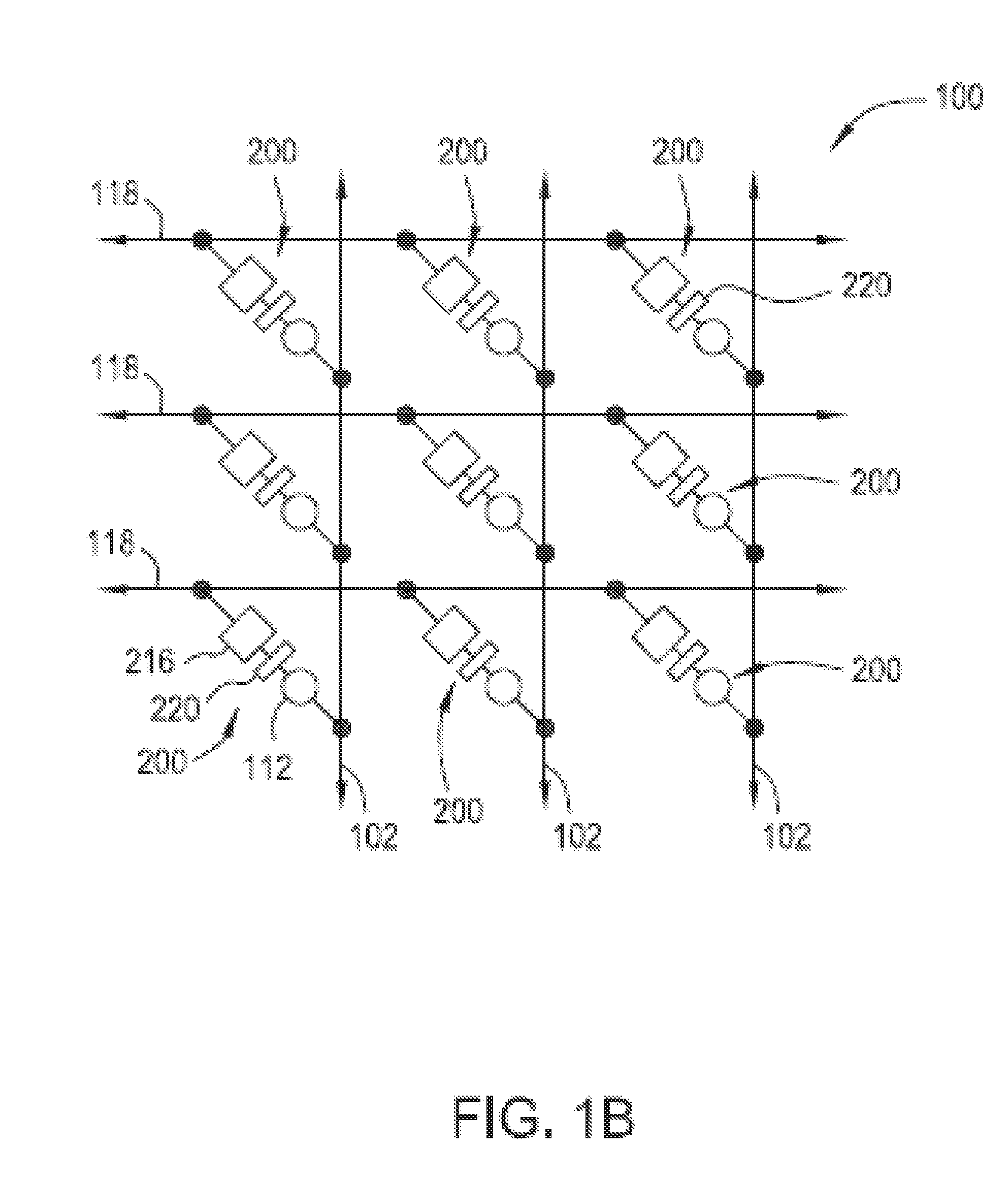Memory cell having an integrated two-terminal current limiting resistor
a memory cell and resistor technology, applied in the field of resistive switching memory cells, can solve the problems of difficult to use a low resistance metal oxide film to form a reliable nonvolatile memory device, the resistance of these mo films and/or the ratio of high-to-low resistance states is often insufficient to meet the needs of traditional nonvolatile memory technology, and the difficulty of preventing the “on” and “off” currents, to achieve the effect of minimizing the total leakage current and preventing the “
- Summary
- Abstract
- Description
- Claims
- Application Information
AI Technical Summary
Benefits of technology
Problems solved by technology
Method used
Image
Examples
examples
[0142]In some embodiments, after performing the processing sequence 700, the formed memory cell 200 includes: about 50 Å of a titanium nitride (TiN) layer (as the electrode 102), about 30 Å thick of a hafnium oxide (HfOx) layer (as the variable resistance layer 206), about 50 Å thick of an n-doped polysilicon layer (as the intermediate electrode 210), and the resistor structure 220. The resistor structure 220 may be between about 10 Å and 1,000 Å thick and includes a N+ polysilicon layer of between about 10 Å and 400 Å, a N− polysilicon layer of between about 10 Å and 500 Å, and a N+ polysilicon layer of between about 10 Å and 400 Å. After forming the memory cell 200 having the resistor structure and the resistive switching memory element 112 and other material layers, the formed memory cell 200 is subject to at least one thermal processing step to anneal and / or activate the material layers in the formed memory cell 200.
[0143]As an example, the memory cell 200 may contain a resistor...
PUM
 Login to View More
Login to View More Abstract
Description
Claims
Application Information
 Login to View More
Login to View More - R&D
- Intellectual Property
- Life Sciences
- Materials
- Tech Scout
- Unparalleled Data Quality
- Higher Quality Content
- 60% Fewer Hallucinations
Browse by: Latest US Patents, China's latest patents, Technical Efficacy Thesaurus, Application Domain, Technology Topic, Popular Technical Reports.
© 2025 PatSnap. All rights reserved.Legal|Privacy policy|Modern Slavery Act Transparency Statement|Sitemap|About US| Contact US: help@patsnap.com



